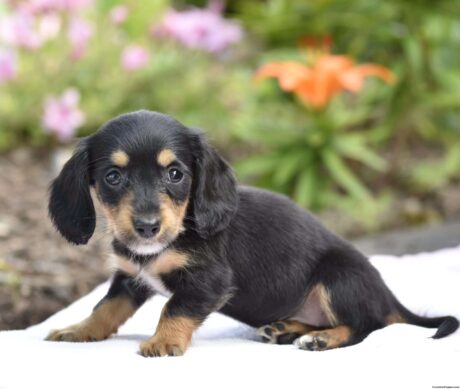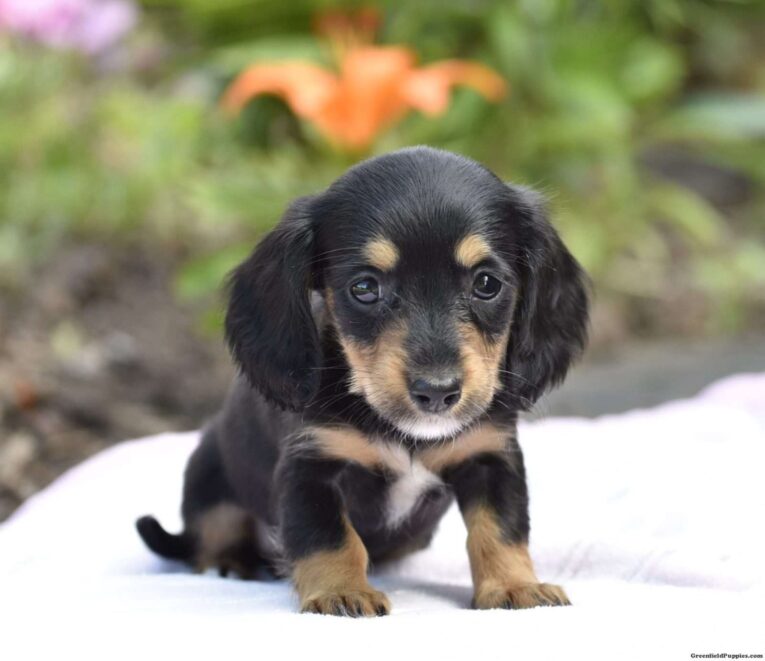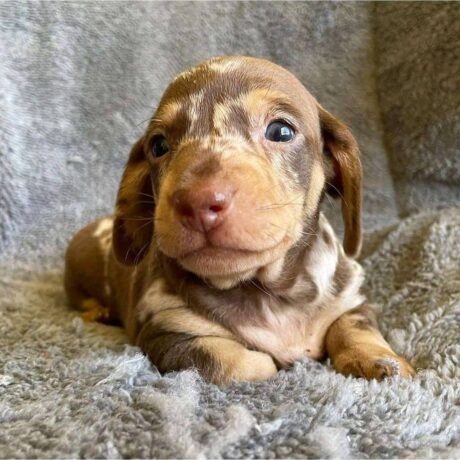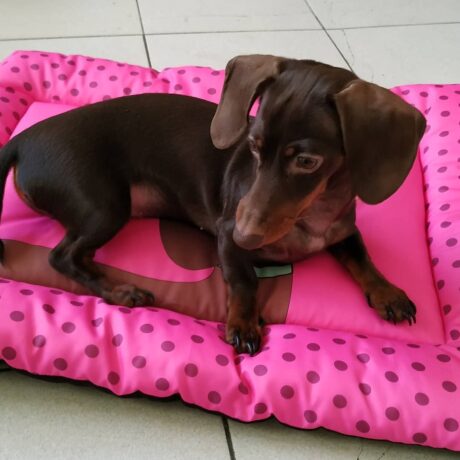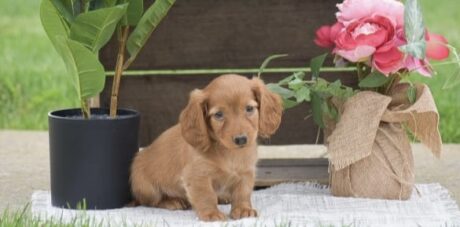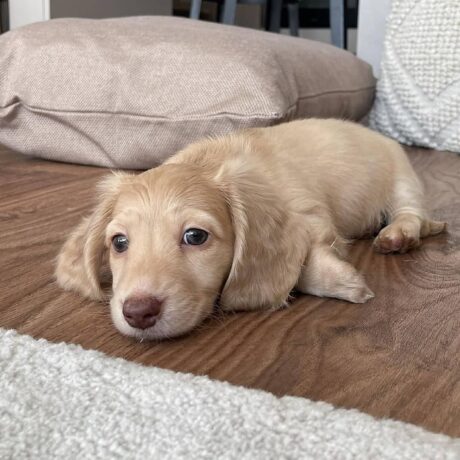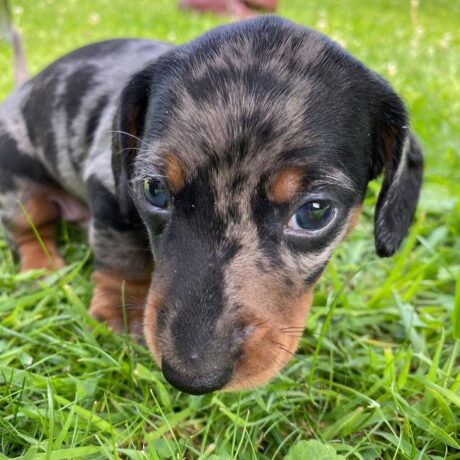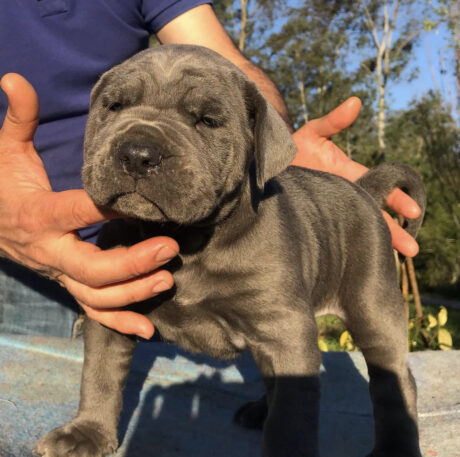Piebald Dachshund: A Comprehensive Guide
The Piebald Dachshund is a unique and charming variant of the Dachshund breed, known for its distinctive coat patterns and lively personality. These dogs are beloved for their striking appearance and affectionate nature. This comprehensive guide delves into the history, characteristics, care requirements, and health considerations of the Piebald Dachshund to help you understand and appreciate this wonderful breed.
History and Origin of Piebald Dachshund
The Piebald Dachshund originates from the standard Dachshund, a breed that traces back to Germany in the 15th century. Dachshunds were originally bred for hunting badgers; hence, their name translates to “badger dog” in German. The Piebald variety, characterized by its unique coat pattern of large, irregular patches of color on a white background, emerged as breeders sought to introduce more variety into the breed’s appearance. This distinct pattern results from a recessive gene, making it less common and highly sought after by enthusiasts.
Physical Characteristics of Piebald Dachshunds
Coat and Coloration
The defining feature of a Piebald Dachshund is its coat, which can come in various colors, including black, brown, tan, and red, all set against a predominantly white background. The pattern can vary greatly, with some dogs having large patches of color and others having more minor, scattered spots. This variability makes each Piebald Dachshund unique.
Body Structure
Piebald Dachshunds have a long, muscular body with short, sturdy legs like all Dachshunds. This distinctive shape is part of what makes them excellent at burrowing and digging. They come in three coat varieties: smooth, long-haired, and wire-haired, each with its grooming requirements.
Size
Piebald Dachshunds are generally categorized into three sizes: standard, miniature, and kaninchen (rabbit-sized). The standard size weighs between 16 and 32 pounds, the miniature typically weighs up to 11 pounds, and the kitchen is smaller, weighing less than 8 pounds.
Temperament and Behavior
Personality Traits
Piebald Dachshunds are known for their playful, lively, and affectionate nature. They are intelligent and curious, traits that stem from their hunting dog ancestry. These dogs are also fiercely loyal to their families and can be protective, making them excellent watchdogs.
Interaction with Families and Other Pets
Due to their affectionate nature, Piebald Dachshunds are great companions for families. They tend to bond closely with their owners and enjoy being involved in family activities. However, their strong prey drive can sometimes lead to challenges living with smaller pets. Early socialization and proper training ensure they get along well with other animals.
Training and Exercise Needs
Training a Piebald Dachshund requires patience and consistency. These dogs are intelligent but can be stubborn, a trait common to many hound breeds. Positive reinforcement methods, such as treats and praise, work best. Early socialization is critical to preventing behavioral issues and ensuring they become well-rounded adults.
Exercise Requirements
Despite their small size, Piebald Dachshunds have moderate exercise needs. Daily walks and playtime are essential to keep them physically and mentally stimulated. They enjoy activities that engage their natural hunting instincts, such as tracking games and puzzle toys.
Health and Lifespan
Common Health Issues
Like all Dachshunds, Piebald Dachshunds are prone to specific health issues, particularly those related to their unique body structure. Intervertebral disc disease (IVDD) is a common concern due to the long spine. Regular vet check-ups and maintaining a healthy weight can help mitigate this risk. Other potential health issues include obesity, dental problems, and heart disease.
Lifespan
With proper care, Piebald Dachshunds can live between 12 and 16 years. A balanced diet, regular exercise, and routine veterinary care are essential to ensuring a long, healthy life.
Grooming and Maintenance
Coat Care
The grooming needs of a Piebald Dachshund depend on their coat type. Smooth-coated Dachshunds require minimal grooming, typically just regular brushing to remove loose hair. Long-haired Dachshunds need more frequent brushing to prevent tangles and mats, while wire-haired Dachshunds benefit from occasional trimming and stripping to maintain their coat’s texture.
General Maintenance
In addition to coat care, Piebald Dachshunds need regular nail trimming, ear cleaning, and dental care. Their nails should be trimmed every few weeks to prevent overgrowth and discomfort. Cleaning their ears helps prevent infections, and regular brushing their teeth helps maintain good dental health.
Diet and Nutrition
Feeding Requirements
A balanced diet is crucial for the overall health of a Piebald Dachshund. High-quality commercial dog food that meets their nutritional needs is a good choice. The food required can vary based on size, age, and activity level. It is essential to avoid overfeeding, as Dachshunds are prone to obesity, which can exacerbate health issues like IVDD.
Special Dietary Considerations
Some Piebald Dachshunds may have specific dietary needs based on health conditions or allergies. Consult your veterinarian to determine the best diet for your dog. Providing fresh water at all times is also essential to keep them hydrated.
Conclusion
The Piebald Dachshund is a delightful and distinctive breed that brings joy and companionship to many households. Their unique coat patterns, playful nature, and affectionate demeanor make them a favorite among dog lovers. By understanding their history, characteristics, and care requirements, you can ensure a happy and healthy life for your Piebald Dachshund. Whether you are a prospective owner or a current enthusiast, this guide is a valuable resource for everything you need to know about this charming breed.
